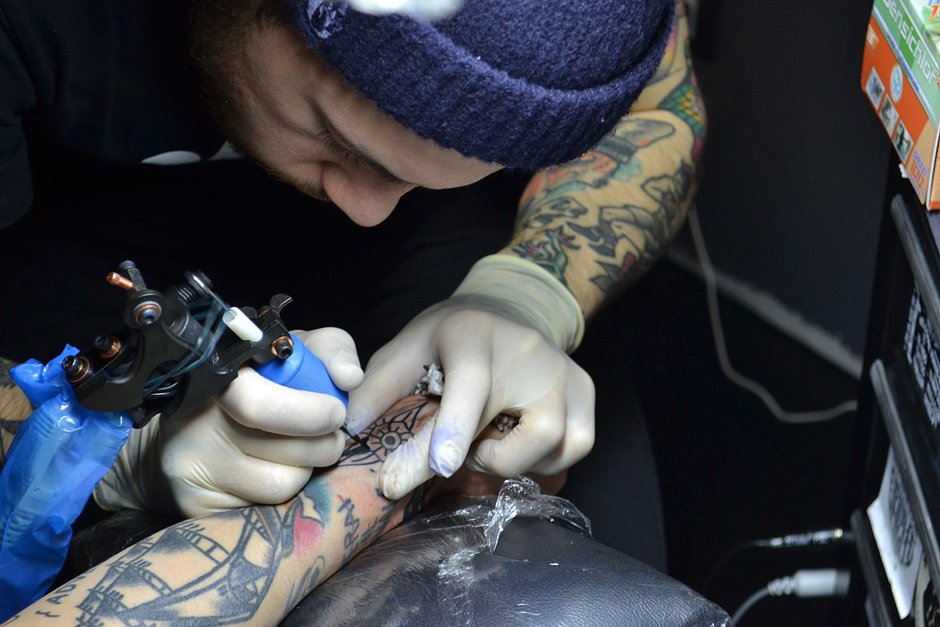Tattoo Styles And Equipment Explained
Tattooing, an art form rich in diversity and history, encompasses a variety of styles, each with its unique characteristics and equipment needs. Just as a painter selects brushes and paints based on the artwork they intend to create, a tattoo artist must choose their equipment based on the style of tattooing they practice. This article explores the different styles of tattooing and the specific equipment required for each, offering insights for both aspiring and seasoned tattoo artists.
Traditional or Old School Tattoos
Characterized by bold lines and bright, solid colors, traditional tattoos are reminiscent of the classic American style. Key equipment includes:
- Liner Machines: Essential for the thick, bold lines.
- Round Liner Needles: Ideal for clean outlines.
- Bright, Basic Color Inks: Traditional tattoos use a limited but vibrant color palette.
Realism Tattoos
Realism tattoos replicate photographs or real-life imagery with incredible detail. They require:
- Rotary Tattoo Machines: For smooth shading and less skin trauma.
- Magnum Needles: Suitable for shading and blending.
- A Wide Range of Color Inks: For detailed, lifelike coloration.
Watercolor Tattoos
These tattoos mimic the effect of watercolor paintings with splashes of color and a soft, brush-like appearance. Artists need:
- Rotary Machines: For gentle saturation of color.
- Flat Shader Needles: To achieve a dispersed, paintbrush-like effect.
- High-Quality Color Inks: Offering a wide spectrum of shades.
Tribal and Blackwork Tattoos
Tribal tattoos, often black with intricate patterns and symbols, and Blackwork, focusing on geometric designs in solid black ink, require:
- Strong Liner Machines: For bold and continuous lines.
- Thick Liner and Shader Needles: To fill large areas with black ink.
- High-Quality Black Ink: That maintains depth and doesn’t fade easily.
Japanese Tattoos
Japanese tattoos, known as Irezumi, feature detailed, colorful imagery and symbols. Equipment includes:
- Both Rotary and Coil Machines: For outlining and shading.
- A Variety of Needle Types: For detailed work and large color fillings.
- A Diverse Ink Palette: Including colors traditionally used in Japanese art.
New School Tattoos
These are characterized by cartoon-like imagery with bold lines and vibrant colors, similar to graffiti art. They need:
- Versatile Liner and Shader Machines: To handle diverse designs.
- Bright, Varied Color Inks: To achieve the cartoonish, vibrant look.
Dotwork Tattoos
Dotwork involves creating images and shading with dots, often used in mandalas or geometric patterns. Essential equipment:
- Rotary Machines: For precision.
- Round Liner Needles: To create perfect dots.
- Black and Gray Inks: Usually the primary colors used.
Minimalist Tattoos
Minimalist tattoos are simple designs with clean lines and minimal color. They require:
- Fine Liner Machines: For delicate, precise lines.
- Small Round Liner Needles: To create thin, sharp lines.
- Basic Black Ink: The primary color used in minimalist designs.
Biomechanical Tattoos
Inspired by a combination of human anatomy and mechanical elements, these tattoos are complex and detailed. Equipment includes:
- High-Precision Liner and Shader Machines: For detailed work.
- A Range of Needle Types: To create depth and texture.
- Metallic and Neutral Color Inks: To replicate mechanical and organic elements.
Conclusion
The style of tattooing dictates the equipment needs. From the machine type to the choice of needles and ink colors, each style has its unique requirements. An artist’s understanding of these needs not only showcases their mastery of the art but also ensures the best possible outcome for their clients. Like selecting the right chair in a tattoo salon for comfort, choosing the right equipment is essential for achieving artistic excellence and client satisfaction in the diverse world of tattooing.









